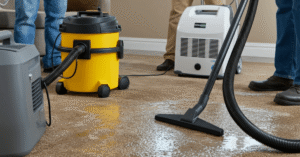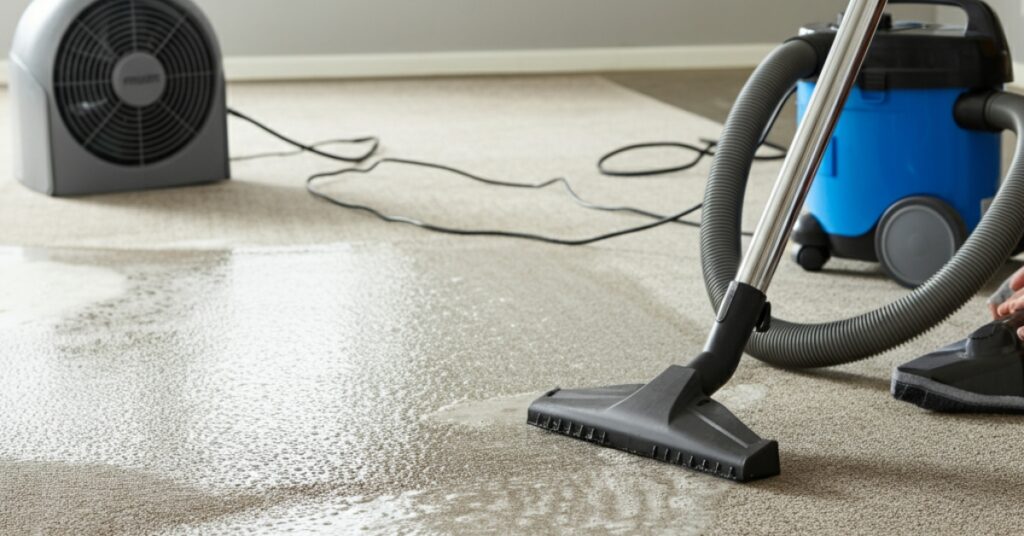As an Amazon Associate, I earn from qualifying purchases.
Discovering a persistent musty odor on your carpet can be frustrating. This unpleasant smell often indicates an underlying issue that goes beyond simple dirt or stains. Understanding the source of the musty odor on your carpet is the first step toward effectively eliminating it and restoring a fresh, clean atmosphere to your home. This smell is frequently a sign of moisture, which can lead to mold and mildew growth deep within the carpet fibers and padding.
This guide will explain what causes that stubborn musty smell and provide a step-by-step approach to getting rid of it for good. We will cover how to identify the source of the problem, the best cleaning methods to use, and proactive tips to prevent the odor from returning. By following these instructions, you can tackle the issue head-on, ensuring your carpet is not only clean but also healthy for your living environment.
Why Does My Carpet Smell Musty?
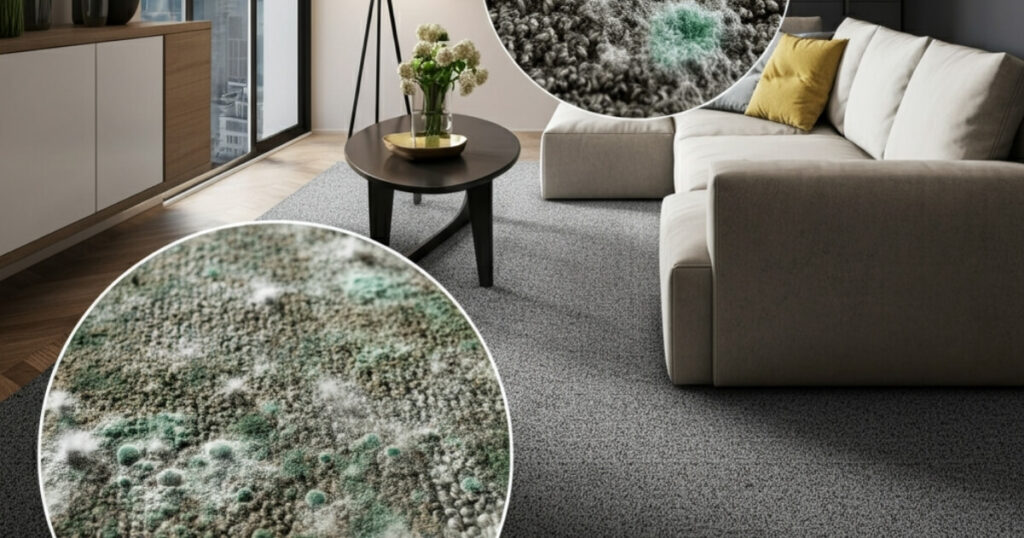
The primary cause of a musty odor on a carpet is the presence of mold and mildew. These fungi thrive in damp, dark environments. When moisture seeps into your carpet and its padding, it creates the perfect breeding ground. The musty smell you notice is actually caused by microbial volatile organic compounds (MVOCs), which are gases released by mold as it grows and multiplies.
Several common household issues can introduce enough moisture to trigger this problem. These include plumbing leaks, spills that were not dried properly, high indoor humidity, or even water seeping in from the foundation. Once mold takes hold, it can be difficult to remove and will continue to produce that characteristic odor until the moisture source is eliminated and the affected area is thoroughly cleaned.
Identifying the Source of Moisture
Finding and stopping the source of moisture is a critical first step. Without addressing the root cause, any cleaning efforts will only provide a temporary solution, and the musty smell will likely return. A systematic inspection of the room can help you pinpoint the problem.
Start by checking for obvious signs of water damage. Look for discoloration or water stains on walls, ceilings, and around windows. You should also inspect any nearby plumbing, such as pipes under sinks or behind appliances, for leaks. If the musty odor is concentrated in a basement, consider if groundwater is seeping through the foundation or if the area suffers from chronic high humidity.
The Connection Between Moisture and Odor
Moisture is the single most important factor for mold and mildew growth. Carpet fibers and the organic materials in the padding provide an ample food source, while typical indoor temperatures are ideal for fungal growth. Spores are always present in the air, but they remain dormant until they land on a damp surface.
When a carpet gets wet and isn’t dried completely within 24-48 hours, these spores begin to germinate. As the mold grows, it digests the organic material in the carpet, releasing MVOCs. This process is what creates the distinct earthy or musty odor. The longer the carpet remains damp, the more extensive the mold growth will be and the stronger the odor will become.
How to Get Rid of a Musty Odor on Carpet
Once you have identified and addressed the source of the moisture, you can begin the process of eliminating the musty odor from your carpet. This involves a thorough cleaning to kill the mold and mildew and remove any lingering smells.
Step 1: Ventilate the Room
Before you start cleaning, ensure the area is well-ventilated. Open windows and doors to allow fresh air to circulate, which helps disperse mold spores and reduce your exposure to cleaning fumes. Using fans can also help to speed up the drying process after cleaning.
Proper ventilation is important for your safety and for the effectiveness of the cleaning. It helps to carry away the musty smell and brings in dry air, which is hostile to mold growth. This simple step sets the stage for a more successful deep cleaning.
Step 2: Sprinkle Baking Soda
Baking soda is a natural and highly effective deodorizer. It works by absorbing odors rather than just covering them up. For this step, generously sprinkle a layer of baking soda over the entire surface of the affected carpet.
Let the baking soda sit for several hours, or even overnight if the odor is particularly strong. This gives it ample time to absorb the musty smells from the carpet fibers. Be sure to keep pets and children away from the area while the baking soda is working.
Step 3: Vacuum Thoroughly
After the baking soda has had time to sit, use a vacuum cleaner with strong suction and a HEPA filter to remove it. A HEPA filter is important because it can trap tiny mold spores and prevent them from being released back into the air.
Vacuum the area slowly and methodically, making several passes in different directions to ensure you pick up all the baking soda and any loose debris. This step will remove not only the baking soda but also the odors it has absorbed.
Step 4: Apply a Vinegar Solution
White vinegar is a natural disinfectant that can kill mold and mildew. Mix equal parts white vinegar and water in a spray bottle. Lightly spray the solution onto the affected area of the carpet.
Be careful not to oversaturate the carpet, as excess moisture can worsen the problem. The goal is to dampen the fibers enough to kill the mold. The vinegar smell will be strong at first but will dissipate as it dries, taking the musty odor with it.
Step 5: Scrub and Blot the Area
Use a soft-bristled brush to gently scrub the vinegar solution into the carpet fibers. This helps the solution penetrate deeper and break down the mold and mildew. Work from the outside of the affected area inward to prevent spreading the mold.
After scrubbing, use clean, dry towels to blot the area and absorb as much moisture as possible. Press down firmly on the towels to draw the liquid out of the carpet and padding. Repeat this process with fresh towels until the area is as dry as you can get it.
Step 6: Dry the Carpet Completely
Proper drying is crucial to prevent the mold and musty odor from returning. Use fans or a dehumidifier to speed up the drying process. Direct the airflow across the surface of the carpet.
The carpet must be completely dry to the touch before you consider the job finished. This can take several hours, so be patient. Feeling the carpet backing can also help you determine if moisture is still trapped underneath.
When to Call a Professional
While DIY methods can be effective for minor issues, there are times when it’s best to call a professional. If the musty odor persists after your cleaning efforts, or if you suspect a large-scale mold infestation (generally larger than 10 square feet), a professional carpet cleaner or mold remediation specialist is your best option.
Professionals have access to powerful equipment, such as commercial-grade steam cleaners and dehumidifiers, that can deep clean and dry your carpet more effectively. They can also safely handle extensive mold growth and ensure that the problem is fully resolved, protecting both your property and your health.
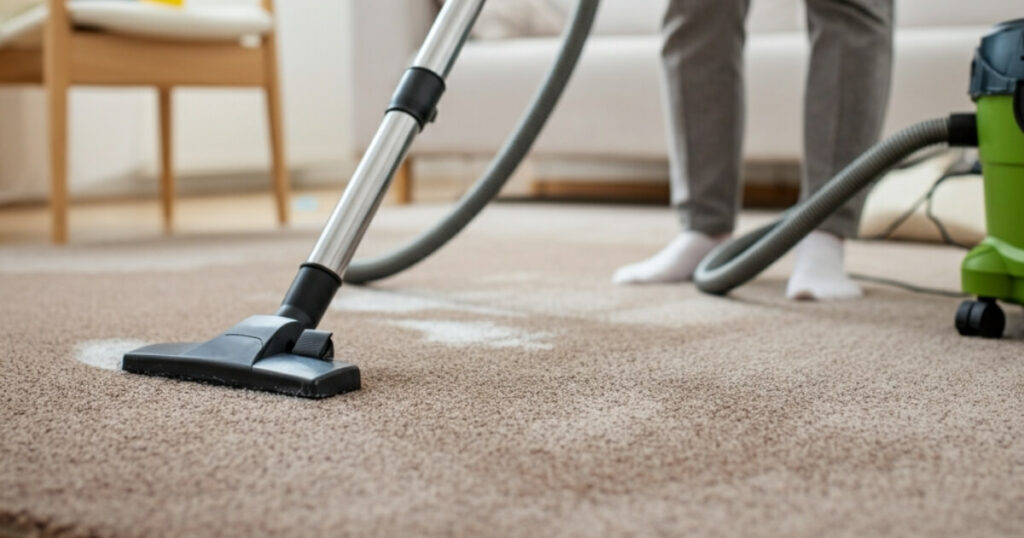
Frequently Asked Questions
1. Will a musty carpet smell go away on its own?
No, a musty carpet smell will generally not go away on its own. The odor is a sign of mold or mildew, which will continue to grow as long as moisture is present. You must address the moisture source and clean the carpet to eliminate the smell.
2. Can I use bleach to remove the musty odor from my carpet?
No, it is not recommended to use bleach on carpets. Bleach can discolor and damage carpet fibers. A solution of white vinegar and water is a safer and effective alternative for killing mold and neutralizing odors.
3. How can you tell if there is mold under the carpet?
A persistent musty odor is the most common sign of hidden mold. You might also notice unexplained discoloration on the carpet’s surface, or the carpet may feel damp or spongy. To be certain, you can carefully pull back a corner of the carpet to inspect the padding and subfloor.
4. What is the fastest way to get a musty smell out of a carpet?
The fastest method for a minor odor is to sprinkle baking soda, let it sit for a few hours, then vacuum it up thoroughly. For more persistent smells, cleaning with a vinegar solution and ensuring the carpet dries completely is necessary.
5. How long does it take for a carpet to smell musty after getting wet?
A carpet can start to develop a musty smell from mold growth in as little as 24 to 48 hours after getting wet. Quick and thorough drying is essential to prevent this from happening.
Prevent Musty Odors in the Future
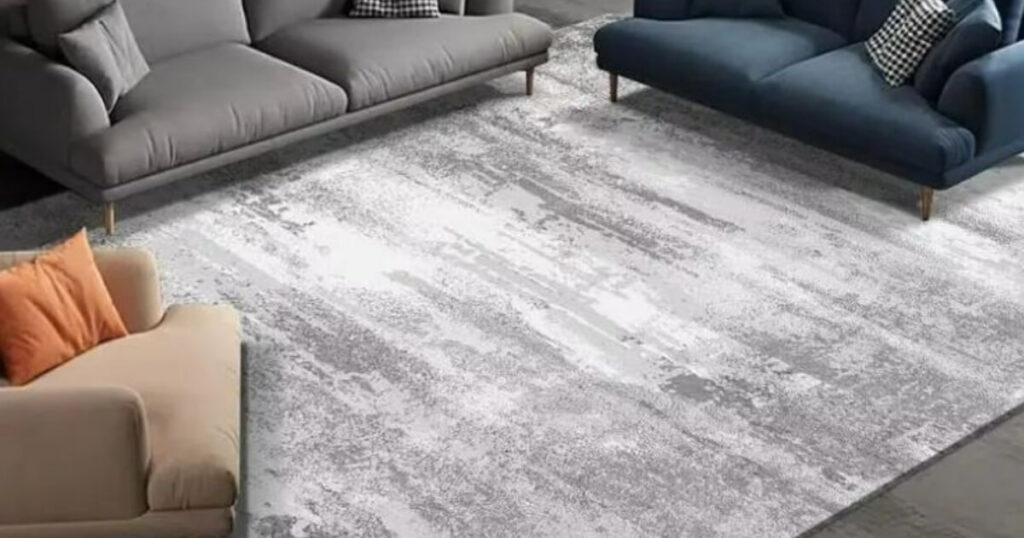
Prevention is the most effective strategy for keeping your carpets fresh. The key is to control moisture in your home. Regularly inspect for and repair any leaks in your plumbing, roof, or windows. Use dehumidifiers in damp areas like basements and make sure your home has good ventilation.
Clean up spills immediately and dry the area completely. Regular vacuuming also helps by removing dirt and mold spores before they can cause a problem. By taking these proactive steps, you can maintain a clean, healthy, and odor-free home.
As an Amazon Associate, I earn from qualifying purchases.

